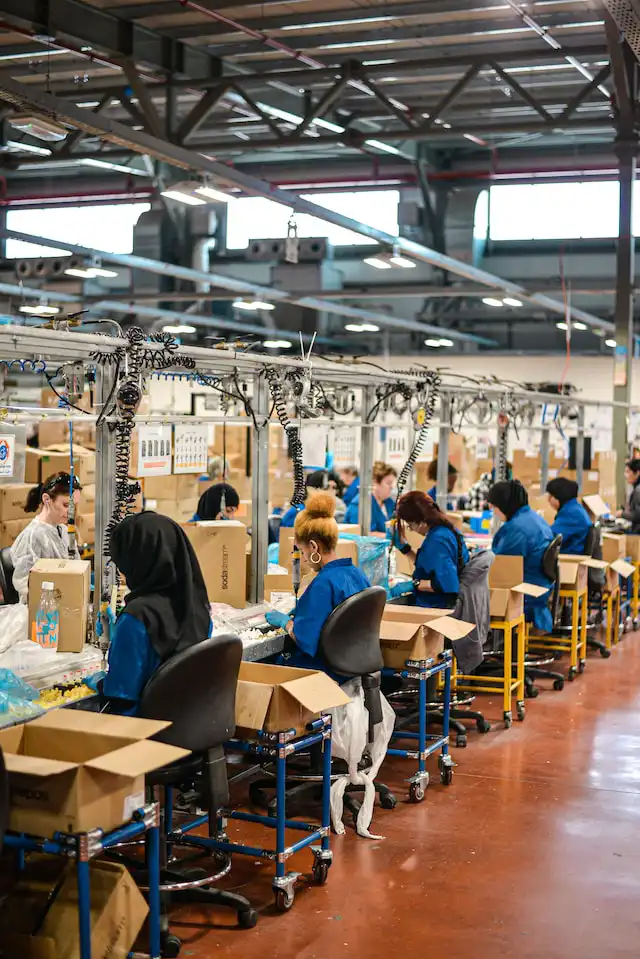
India Clothing Market Outlook to 2028
Region:Asia
Author(s):Shambhavi Awasthi
Product Code:KROD312
June 2024
100
About the Report
India Clothing Market Outlook to 2028
India Clothing Market Overview
- The Indian clothing market was valued at USD 100 Bn in 2023, showing a resilient growth trajectory despite global economic pressures. The compound annual growth rate from 2018 to 2023 was 6%.
- The surge in e-commerce platforms, increased fashion consciousness among consumers, and the popularity of fast fashion have significantly contributed to this growth.
- India Clothing Market is fragmented with prominent players include Reliance Trends, Aditya Birla Fashion and Retail, and Raymond Ltd., which dominate due to diverse product offerings and widespread distribution networks.
- In 2023, Aditya Birla Fashion and Retail Ltd. announced a strategic partnership with India's leading e-commerce platform, Flipkart. This partnership aims to strengthen its online presence and leverage Flipkart's extensive reach to enhance customer engagement and sales.

India Clothing Current Market Analysis
- The rapid growth of e-commerce platforms has revolutionized the Indian clothing market. Online sales channels have expanded the reach of brands, offering consumers a wide variety of choices and convenience. As of 2023, e-commerce accounted for 15% of the total clothing sales in India, driven by increased internet penetration and smartphone usage.
- The increasing availability of diverse clothing options has transformed consumer behaviour. There is a growing preference for branded and high-quality apparel, reflecting a shift towards premiumization in the clothing market.
- The western region of India, particularly Maharashtra and Gujarat, dominates the clothing market. Maharashtra and Gujarat are major textile and garment manufacturing hubs, with well-established infrastructure and skilled labour. These states account for a significant portion of India's textile production.
India Clothing Market Segmentation
By Product Type: The clothing market is segmented by product type into Casual Wear, Formal Wear and Ethical/Sustainable. Casual wear dominates the Indian clothing market due to its versatility and comfort, aligning with the growing trend of relaxed dress codes in workplaces and social settings.

By Gender: The clothing market is segmented by Gender into men, women and children. The men's clothing segment holds a dominant market share due to steady demand for both casual and formal wear. Cultural and professional norms require men to maintain a varied wardrobe, including suits, shirts, and casual attire.

By Distribution Channel: The clothing market is segmented by distribution channel into online offline channels. Offline retail dominates the Indian clothing market due to the cultural preference for tactile shopping experiences, allowing customers to physically inspect and try on garments.
India Clothing Market Competitive Landscape
|
Company |
Establishment Year |
Headquarters |
|
Aditya Birla Fashion & Retail |
1997 |
Mumbai |
|
Reliance Retail |
2006 |
Mumbai |
|
Future Group |
1987 |
Mumbai |
|
Raymond Group |
1925 |
Mumbai |
|
Arvind Limited |
1931 |
Ahmedabad |
- Aditya Birla Fashion & Retail: In 2023, the company partnered with Flipkart to expand its online presence and leverage the e-commerce giant’s reach. This collaboration aims to boost sales through enhanced digital engagement.
- Reliance Retail: Launched a new range of sustainable fashion under the brand “Earth Conscious” in 2023, focusing on eco-friendly materials and production processes to meet the growing demand for sustainable fashion.
- Future Group: Introduced a tech-enabled shopping experience in its FBB stores in 2023, incorporating augmented reality (AR) for virtual try-ons, enhancing customer engagement, and driving footfall.
- Raymond Group: Announced the opening of a state-of-the-art tailoring hub in 2023, aimed at providing customized tailoring services and enhancing its bespoke offerings.
- Arvind Limited: In 2023, Arvind Limited launched a new collection of smart clothing embedded with wearable technology, targeting tech-savvy consumers and expanding its innovative product portfolio.
India Clothing Industry Analysis
India Clothing Market Growth Drivers
- Rise of E-commerce and Online Shopping: The Indian clothing market has significantly benefited from the rise of e-commerce platforms. Flipkart’s reach in the Indian e-commerce market is significant, with over 300 million registered users as of 2023.
- Influence of social media and Fashion Influencers: Social media platforms like Instagram, Facebook, and YouTube have become crucial marketing tools for the clothing industry. As of 2024, India has over 500 million social media users, and the influence of fashion bloggers and influencers has skyrocketed. The rise of "fast fashion" is closely tied to social media.
- Increased Demand for Sustainable and Ethical Fashion: The growing awareness of environmental issues has led to a significant shift towards sustainable and ethical fashion in India. As of 2024, the sustainable fashion segment has grown substantially, with brands like Fabindia, B Label, and No Nasties leading the way. Government initiatives like the "Sustainable Textile Mission" launched in 2023 aim to promote sustainable practices.
- Expansion of Organized Retail: The expansion of organized retail, including malls and branded retail stores, has played a crucial role in the growth of the clothing market. This growth is driven by the increasing number of shopping malls and retail outlets in Tier II and Tier III cities.
India Clothing Market Challenges
Competition from Unorganized Sector: The unorganized sector, which includes local tailors, small-scale manufacturers, and street vendors, accounts for a significant portion of the Indian clothing market. According to the Confederation of Indian Textile Industry (CITI), the unorganized sector's dominance hampers the growth.
Counterfeit Products and Brand Infringement: The prevalence of counterfeit products and brand infringement is a major issue in the Indian clothing market. Counterfeit goods not only affect brand reputation but also result in significant revenue losses. The Federation of Indian Chambers of Commerce and Industry (FICCI) reports that the counterfeit market in India is growing.
Fluctuating Raw Material Prices: Fluctuating prices of raw materials, such as cotton and synthetic fibers, present a significant challenge to the clothing market. In 2024, global supply chain issues and environmental factors have caused volatility in raw material prices.
India Clothing Market Government Initiatives:
Production Linked Incentive (PLI) Scheme for Textiles (2021): Launched in 2021, the Production Linked Incentive (PLI) scheme for textiles aims to promote the production of man-made fiber (MMF) apparel and technical textiles in India. The scheme offers financial incentives to manufacturers based on their incremental production and sales.
Scheme for Integrated Textile Parks (SITP) (2005): The Scheme for Integrated Textile Parks (SITP), launched in 2005, aims to provide world-class infrastructure to the textile industry. The scheme offers financial support for the development of textile parks, promoting investment in the sector. As of 2024, over 59 textile parks have been sanctioned under the SITP.
National Technical Textiles Mission (2020): The National Technical Textiles Mission, launched in 2020, aims to promote the growth of the technical textiles sector in India. As of 2024, the government has allocated INR 1,480 crore for the mission.
India Clothing Market Future Outlook
The India Clothing market is expected to show significant growth driven by increased consumer spending, digital transformation, and enhanced market penetration.
Future Market Trends
- Adoption of Technology in Fashion Retail: The adoption of technology in fashion retail is transforming the Indian clothing market. In 2024, advancements in AI, big data analytics, and augmented reality (AR) are revolutionizing how brands interact with consumers. AI-driven personalization tools offer customized shopping experiences, while AR enables virtual try-ons, enhancing customer engagement and satisfaction.
- Growth of Athleisure and Comfort Wear: The athleisure trend, combining athletic and leisurewear, has gained immense popularity in India. As of 2024, the demand for athleisure and comfort wear has surged, driven by the increasing focus on health and fitness and the shift towards remote working. Brands like Nike, Adidas, and Puma are expanding their athleisure lines to cater to this growing segment.
- Rise of Direct-to-Consumer (DTC) Brands: The rise of direct-to-consumer (DTC) brands is a notable trend in the Indian clothing market. DTC brands bypass traditional retail channels, selling directly to consumers through online platforms. In 2024, DTC brands like Bewakoof, The Souled Store, and FableStreet have gained significant traction, attracting a loyal customer base.
Scope of the Report
|
By Product Type |
Casual Wear Formal Wear Ethical/Sustainable |
|
By Gender |
Men Women Others |
|
By Distribution Channel |
Offline Retail Online Retail |
Products
Key Target Audience – Organizations and Entities Who Can Benefit by Subscribing This Report:
- Clothing Manufacturers
- Fashion Retailers
- E-commerce Platforms
- Textile Suppliers
- Fashion Designers
- Cloth Supply Chain Logistics Companies
- Government and regulatory Bodies
- Banks and Financial Institutions
Time Period Captured in the Report:
- Historical Period: 2018-2023
- Base Year: 2023
- Forecast Period: 2023-2028
Companies
Players Mentioned in the Report:
- Reliance Trends
- Aditya Birla Fashion and Retail
- Raymond Ltd.
- Levi’s
- Zara
- H&M
- FabIndia
- Myntra
- Shoppers Stop
- Westside (Trent)
- Biba
- Global Desi
Table of Contents
1. India Clothing Market Overview
1.1 India Clothing Market Taxonomy
2. India Clothing Market Size (in USD Bn), 2018-2023
3. India Clothing Market Analysis
3.1 India Clothing Market Growth Drivers
3.2 India Clothing Market Challenges and Issues
3.3 India Clothing Market Trends and Development
3.4 India Clothing Market Government Regulation
3.5 India Clothing Market SWOT Analysis
3.6 India Clothing Market Stake Ecosystem
3.7 India Clothing Market Competition Ecosystem
4. India Clothing Market Segmentation, 2023
4.1 India Clothing Market Segmentation by Product type (in value %), 2023
4.2 India Clothing Market Segmentation by Gender (in value %), 2023
4.3 India Clothing Market Segmentation by Distribution Channel (in value %), 2023
5. India Clothing Market Competition Benchmarking
5.1 India Clothing Market Cross-Comparison (no. of employees, company overview, business strategy, USP, recent development, operational parameters, financial parameters and advanced analytics)
6. India Clothing Future Market Size (in USD Bn), 2023-2028
7. India Clothing Future Market Segmentation, 2028
7.1 India Clothing Market Segmentation by Product Type (in value %), 2028
7.2 India Clothing Market Segmentation by Gender (in value %), 2028
7.3 India Clothing Market Segmentation by Distribution Channel (in value %), 2028
8. India Clothing Market Analysts’ Recommendations
8.1 India Clothing Market TAM/SAM/SOM Analysis
8.2 India Clothing Market Customer Cohort Analysis
8.3 India Clothing Market Marketing Initiatives
8.4 India Clothing Market White Space Opportunity Analysis
Disclaimer
Contact Us
Research Methodology
Step: 1 Identifying Key Variables:
Ecosystem creation for all the major entities and referring to multiple secondary and proprietary databases to perform desk research around market to collate industry level information.
Step: 2 Market Building:
Collating statistics on India clothing market over the years, penetration of marketplaces and service providers ratio to compute revenue generated for India clothing market. We will also review service quality statistics to understand revenue generated which can ensure accuracy behind the data points shared.
Step: 3 Validating and Finalizing:
Building market hypothesis and conducting CATIs with industry experts belonging to different companies to validate statistics and seek operational and financial information from company representatives.
Step: 4 Research Output:
Our team will approach multiple clothing companies and understand nature of product segments and sales, consumer preference and other parameters, which will support us validate statistics derived through bottom to top approach from clothing companies.
Frequently Asked Questions
01. How big is India Clothing Market?
The Indian clothing market was valued at USD 100 Bn in 2023, driven by surge in e-commerce platforms, increased fashion consciousness among consumers, and the popularity of fast fashion.
02. Who are the major players in the India Clothing Market?
Prominent players in India clothing market include Reliance Trends, Aditya Birla Fashion and Retail, and Raymond Ltd., which dominate due to diverse product offerings and widespread distribution networks.
03. What is the dominant segment in India Clothing Market?
The casual wear segment dominates the India Clothing market, favoured by the youth demographic and the increasing acceptance of casual attire in various settings including the workplace.
04. What are the challenges in India Clothing Market?
Competition from unorganized sector, counterfeit products and brand infringement and raw material price fluctuation are few of the challenges.
Why Buy From Us?

What makes us stand out is that our consultants follows Robust, Refine and Result (RRR) methodology. i.e. Robust for clear definitions, approaches and sanity checking, Refine for differentiating respondents facts and opinions and Result for presenting data with story

We have set a benchmark in the industry by offering our clients with syndicated and customized market research reports featuring coverage of entire market as well as meticulous research and analyst insights.

While we don't replace traditional research, we flip the method upside down. Our dual approach of Top Bottom & Bottom Top ensures quality deliverable by not just verifying company fundamentals but also looking at the sector and macroeconomic factors.

With one step in the future, our research team constantly tries to show you the bigger picture. We help with some of the tough questions you may encounter along the way: How is the industry positioned? Best marketing channel? KPI's of competitors? By aligning every element, we help maximize success.

Our report gives you instant access to the answers and sources that other companies might choose to hide. We elaborate each steps of research methodology we have used and showcase you the sample size to earn your trust.

If you need any support, we are here! We pride ourselves on universe strength, data quality, and quick, friendly, and professional service.















